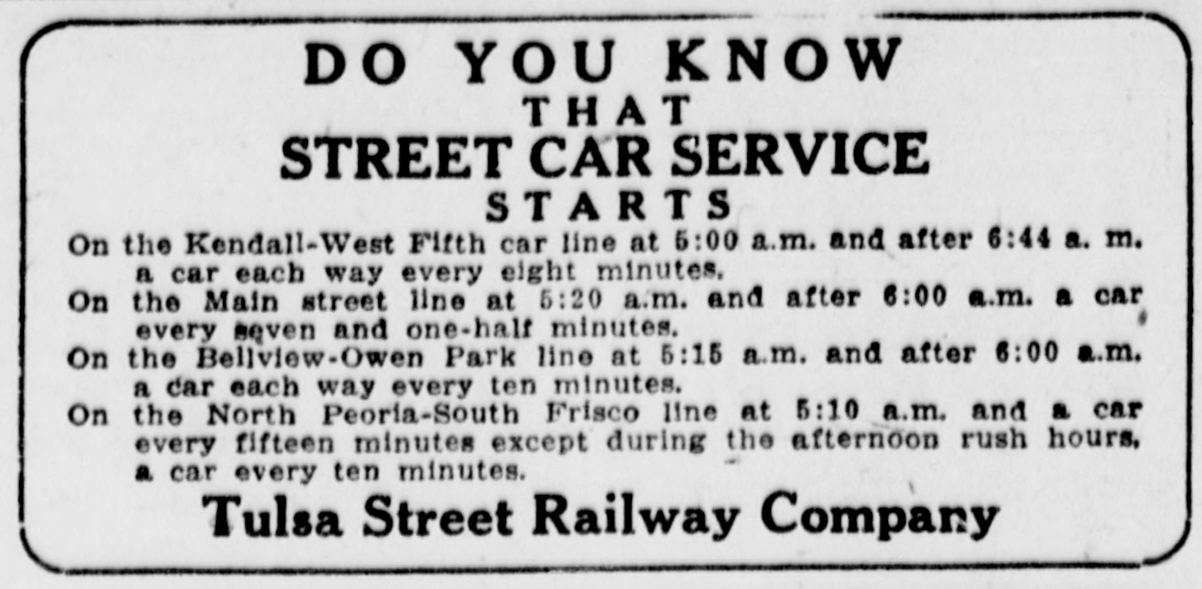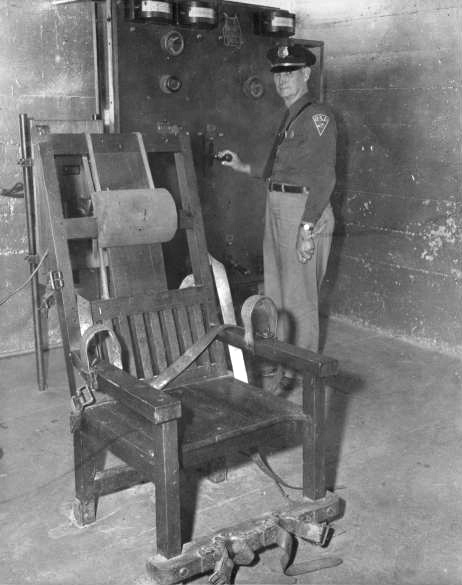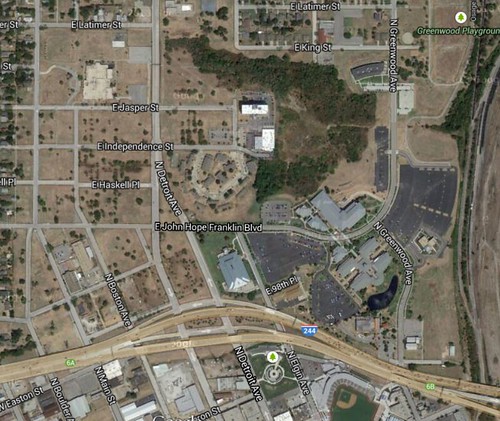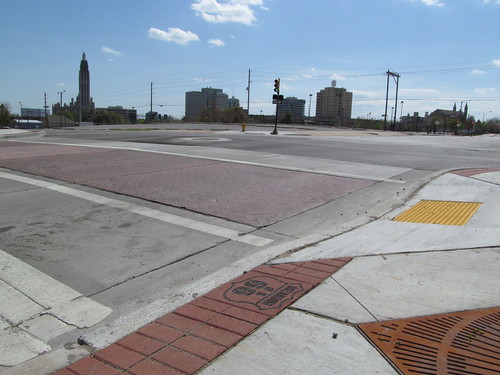May 2014 Archives
The Tulsa Boy Singers will present a spring concert of sacred and secular choral music at Trinity Episcopal Church, 500 S. Cincinnati Ave. in downtown Tulsa, this Friday, May 30, 2014, at 7:30 p.m.
Repertoire from the concert includes:
- Sound of Music medley by Rogers and Hammerstein
- "O Lord, Increase My Faith," a 17th c. a capella anthem by Henry Loosemore
- "The Lord Is My Shepherd," the theme from TV's "The Vicar of Dibley," by Howard Goodall
- "Magnificat" and "Nunc Dimittis," by Herbert Sumsion
- "Songs of a Prospector," poems by British Columbia pioneer and miner George Winkler, set to music by Stephen Chatman
- "Winds," a poem by the students of Faywood School in Toronto, set to music by Larysa Kuzmenko
- "At the River," Aaron Copland's adaptation of the traditional gospel hymn
As an added bonus, violinist Joseph Bates, a veteran TBS singer, will present the first movement of Bruch's Violin Concerto No. 1 in G minor.
There will be a reception with savory and sweet treats after the concert. Boys interested in joining TBS for next year may audition immediately after the concert -- just a quick test of ability to hear and follow a melody.

Article 5, Section 23, of the Oklahoma Constitution:
No member of the Legislature shall, during the term for which he was elected, be appointed or elected to any office or commission in the State, which shall have been created, or the emoluments of which shall have been increased, during his term of office, nor shall any member receive any appointment from the Governor, the Governor and Senate, or from the Legislature, during the term for which he shall have been elected, nor shall any member, during the term for which he shall have been elected, or within two years thereafter, be interested, directly or indirectly, in any contract with the State, or any county or other subdivision thereof, authorized by law passed during the term for which he shall have been elected.
State Sen. Brian Crain stepped out of the race for District Attorney in Tulsa County this weekend, citing the above constitutional provision. HJR1096, which was approved by the House on Wednesday and the Senate on Friday, increases salaries for judges by 6% and indirectly increases salaries for district attorneys, which are set as 98% of a district judge's salary.
State Rep. Sydney Fred Jordan Jr., another candidate for DA, claims that he isn't affected by this provision because, as a House member, his term expires this year, while Sen. Crain isn't up for replacement until 2016.
But the term of office doesn't expire until after the November elections. New legislators are sworn in in late November, after their election has been certified. If the Governor were to call a special session between now and that time, Sydney Fred Jordan Jr. would still be the representative for House District 69. Jordan is as ineligible as Crain is.
Jordan appears to have been aware of a potential problem -- he claimed "Constitutional Privilege" when the issue came before the House. Perhaps he thought it would exempt him from the constitutional provision, but Article 5, Section 23, doesn't care whether you voted yes or no, or abstained, just whether the raise was enacted during the legislator's term of office, when the legislator may have had opportunity to exercise influence in support of the raise, whether or not he voted for it.
Joe Dorman, leading Democratic candidate for governor, also claimed Constitutional Privilege, even though the bill expressly excludes the Governor and other statewide elected officials from receiving an indirect raise as a result of the judicial raise, which means Article 5, Section 23, won't affect Dorman's candidacy.
Crain had the decency to recognize the problem and back out of the race, rather than force the public to endure lengthy litigation in the event he had been elected. Jordan should do the same. Steve Kunzweiler, the remaining candidate, is currently the head of the criminal division in the DA's office and is well prepared to move up a step to the top job. Tulsa County residents will be in good hands for the next four years. If, in 2018, Crain or Jordan feels that Kunzweiler needs to be replaced, he can run at that time without any constitutional impediment.
MORE:
The Oklahoma Legislative Manual, available online, explains rules, procedures, terminology, and tradition.
David Van Risseghem at Sooner Politics wonders if Steve Kunzweiler will be declared the winner without an election, and he wonders whether other violations of Article 5, Section 23, are just waiting to be found.
Then there's the issue of former legislators doing business with the state. It happens in some very subtle ways and often the state agency's procurement systems don't always know who owns the company they are awarding contracts to. Will there be a new effort to hunt down violators? It will be very interesting to see how this provision is enforced.
Did Brian Crain already violate the last half of Article 5, Section 23? In 2005, Crain co-sponsored (with Rep. Ron Peters) SB 478, which authorized county treasurers and county assessors to employ their own general counsel. This was a sensible bill -- these officials deal with specialized law involving real estate and finance, matters beyond the usual ambit of the District Attorney's office. In 2007 (within the same term of office in which the bill was approved), according to news reports, Crain was paid, via his law firm, to represent the Tulsa County Treasurer's office in bankruptcy proceedings, and in 2008 (still within the same term of office), the County Treasurer directly contracted with Crain for the same role.
John Hart, Sen. Tom Coburn's communications director, attempts to help the mainstream media understand what's happening with the Tea Party movement, and in the process encourages Tea Partiers to be of good cheer, notwithstanding the renomination of Senate Minority Leader Mitch McConnell:
For those keeping score, it is now roughly the GOP establishment 5 (Kentucky, Texas, North Carolina, Ohio, Georgia) and the Tea Party 1 (Nebraska).But this win-loss story line doesn't reflect reality. The real struggle in 2014 is not between the GOP establishment and the Tea Party but within the Tea Party itself. And, more importantly, in spite of this struggle, the Tea Party continues to ascend.
Primary campaigns in states like Kentucky are merely bringing to the surface long-simmering tensions within the conservative movement. On one side is the grassroots -- the Tea Party. Alongside it is crabgrass -- the Tea Party establishment's sometimes invasive tactics, bad judgment (i.e. the government shutdown) and even worse candidate vetting that draw nutrients away from the grassroots.
(A little slap there at Ted Cruz?)
And what is the Tea Party establishment exactly? Like with the Republican Revolution of 1994, it's the part of the reform movement that went native after acquiring real political power. Today, it's the gilded conservative neighborhood of "This Town," Mark Leibovich's book about D.C.'s culture of self-love. It's the catered lunch that never adjourns; the cabal, the mutual-admiration society of master strategists who have never successfully limited government but know how.In primary campaigns, it's the part of the Tea Party that has the hubris to suggest candidates like Bevin are representative of an organic uprising because it says so, regardless of what the real grassroots may think.
In that light, I wonder what Hart and his boss think about the campaign to replace Coburn. Former State House Speaker T. W. Shannon has rounded up endorsements from out-of-state Tea Party-related individuals and groups: former Alaska Gov. Sarah Palin, Texas Sen. Ted Cruz, Utah Sen. Mike Lee, Citizens United Political Victory Fund, FreedomWorks for America, the Senate Conservatives Fund, and Mark Levin. Club for Growth PAC, which played an important role in Coburn's come-from-behind primary win in 2004, has yet to make an endorsement.
(Most recently, Shannon has been endorsed by Sen. Rob Johnson, the driving force behind the Oklahoma Senate's passage of the National Popular Vote compact. That's an endorsement I wouldn't trumpet too loudly. The same could be said of his endorsement by recent chairmen of the Oklahoma State Chamber of Commerce.)
But leaders of local Tea Party organizations like the Tulsa 9/12 Project and OKforTea have expressed their displeasure with groups from outside Oklahoma issuing endorsements before talking to local grassroots activists or investigating voting records. They aren't pleased with U. S. Rep. James Lankford's record either.
Many local conservative activists are lining up behind former State Sen. Randy Brogdon. The Oklahoma Conservative PAC endorsed Brogdon, and OCPAC chairman Charlie Meadows explained why, in a post that also praised Lankford and Shannon.
They are all good communicators, with Lankford being an exceptional talent. His experience in Washington gives him an edge in knowing the process. His intelligence and hard work there allows him to speak with a certain degree of expertise and gravitas....In my opinion, T.W. Shannon has been the most conservative and finest Speaker of the House in state history. In many cases when Republicans get into leadership, they govern a little more liberal. However, that was not the case with T.W. as he even became a little more conservative than before he became Speaker....
When it comes to Randy Brogdon, the bio is conservative, consistent and reliable. He finished 8 years in the legislature with a lifetime Conservative Index Score of 93, a remarkable feat. He was the first Republican SENATOR to score a perfect 100 on the Index in modern times and he did that in his second year in the legislature and in a few more years following....
Bottom line, I believe Brogdon got the OCPAC nod because the people TRUST him, his whole time in government has been about limiting government and expanding liberty. The grassroots people know he will not be beholden to what I lovingly call the "Oklahoma Mafia", the rich and powerful who happen to be more into fascist capitalism and central planning rather than free market capitalism.
But the candidate embraced by the local Tea Party grassroots is reportedly running third in the polls. Should Tea Partiers be discouraged? That brings us back to John Hart's column. He says we shouldn't focus on who is winning but what has changed about what the winners are saying and doing. The Tea Party is transforming the mainstream:
Second, the transformation of McConnell's campaign from 2008 to 2014 shows the overwhelming persuasive and redemptive power of the Tea Party. In 2008, the Senate minority leader ran a series of ads touting his success at bringing home the bacon. In 2014, his campaign had lost that aroma. McConnell himself helped end earmarks in 2010 and recently said no to Majority Leader Harry Reid's call to restore the disgraced practice. McConnell's evolving message shows how the real Tea Party can co-opt and win over the GOP establishment when it sticks to its principles.In fact, thanks to the Tea Party, the old-style "bring home the bacon" campaigns have largely been wiped off the electoral map. Even Democrats have joined the Tea Party's anti-pork campaign. Mark Udall, Claire McCaskill and Elizabeth Warren have all vocally opposed earmarks, a rare challenge to Reid's rigid party discipline.
The Tea Party's influence, of course, extends well beyond earmarks. In race after race, candidates are embracing its message of less government, less spending, less regulation and more freedom, particularly on Obamacare....
The status quo apologists are so eager to belittle the Tea Party because they know its appeal is mainstream. Ronald Reagan (echoing Richard Nixon) called it the silent majority. Tom Coburn called it the rumble. But our founders called it America. The real Tea Party is just another name for our national aversion to centralized power, a core conviction that inspired our founders and is rooted in a deep understanding of history and human nature.
The good news for Oklahoma Tea Partiers is that the leading candidates for U. S. Senate are all talking about their principles. The question is whether the man who replaces Tom Coburn will conduct himself accordance with those principles.
MORE:
James Lankford was elected in the 2010 "Tea Party wave," but that doesn't make him a "Tea Party" congressman.
Evidently even beating an incumbent with Tea Party support doesn't make you a "Tea Party congressman."
Francis Wilkinson praises the Tea Party for channeling anger into political activism:
To see what radical activism and rage-fueled politics look like without such constraints, just look back at the New Left. Black Panther shootouts. Symbionese Liberation Army shootouts. Kathy Boudin & Friends shootouts. The occasional ROTC building explosion. Reckless politics was a cause of death in those ugly years. To the extent that gun laws encourage suicide, homicide and manslaughter, it still is. But the word "laws" makes all the difference.Unlike the New Left, the Tea Party has worked within the system. It has organized public demonstrations, supported candidates and lobbied legislatures. What it has not done is murder police officers or blow up buildings.

Many of my hipster urbanist friends are very fond of food trucks. Food trucks today offer a wide variety of cuisines and a wide range of sophistication and price. The mobility of the kitchen allows the restaurant to go where the customer is. Better food can be offered for a lower price because the truck avoids some of the costs that attend a brick-and-mortar eatery. There are no restrooms to clean and stock, no dining room to manage, no tables to clear, no dishes to wash. Cashier and sous-chef duties can be handled by family members; no need to deal with the complexities of being an employer.
The owner/chef can take his skills to where the customers are, and when the customers aren't there, he can park the truck at home and pursue other work. When demand is high, he can run his truck seven days a week. When it's slow, he can shut down for a while without the ticking of the rent clock. Food-truck fans are rightly concerned to protect this innovative approach to food delivery from regulations that seek to eliminate the food truck's competitive advantages under the guise of protecting the public health.
Many of these hipster urbanists are also very concerned about funding cuts for Tulsa Transit, the regional bus service. The system is almost unusable. Every year or so, I take a trip by bus. I'm always frustrated by the long headways (period between buses on a route), long layover times, and limited hours. Only those who have more time than money choose to ride Tulsa Transit. For many, the only alternative is to pay for an expensive taxi ride on the occasions when time matters and friends aren't available to provide a ride.
The solution most frequently proposed is to implement a tax to provide the bus system with a consistent stream of revenue which can pay for more buses, more drivers, and more frequent service. The problem with that approach is that you're going to wind up with excess capacity most of the time, just to ensure that someone can catch a bus on short notice.
What's the most efficient mechanism for allocating supply to demand? The free market, as long as barriers to entry and the allocation of supply are kept to a minimum. Which reminds me of this joke from the Unix fortunes file:
On his first day as a bus driver, Maxey Eckstein handed in receipts of $65. The next day his take was $67. The third day's income was $62. But on the fourth day, Eckstein emptied no less than $283 on the desk before the cashier."Eckstein!" exclaimed the cashier. "This is fantastic. That route never brought in money like this! What happened?"
"Well, after three days on that cockamamie route, I figured business would never improve, so I drove over to Fourteenth Street and worked there. I tell you, that street is a gold mine!"
The absurd element that makes this funny is that everyone knows buses are supposed to follow a fixed route, even though, unlike streetcars, they could be moved to meet demand, even though they never are.
The debate over the regulation of food trucks reminds me of a similar debate 100 years ago. Streetcar companies had been granted franchises by cities to lay track and hang wire on certain streets. The companies made massive capital investments, but they were hamstrung by city regulations and, sometimes, union contracts setting maximum fares and minimum staff levels.
To give you a sense of the struggle between streetcar company and city government, in 1922, the Oklahoma Union Traction company decided to stop running its St. Louis Ave. line to Orcutt Park. The popular amusement park had given way to private development around what we now call Swan Lake. Demand along the line had dropped. OUT wanted to stop running the line but didn't want their competitor, Tulsa Street Railway, to take it over. Presumably the rails and wire had reuse or scrap value as well, so OUT began pulling its infrastructure out of St. Louis Ave., over the objections of the City of Tulsa. The state Corporation Commission, regulator of intrastate rail, was drawn into the dispute.
Early adopters of the private automobile figured out that they could make money toward gas and car payments by driving along streetcar routes ahead of the next trolley and picking up passengers for a nickel (or "jit") each. Passengers liked jitneys because they got where they were going faster and more comfortably than if they waited for the next streetcar. Streetcar companies hated jitneys, because they stole the fares the companies needed to cover their capital investment and fixed costs.
Streetcar companies fought back with political muscle, persuading city councils to pass restrictions and bans on jitneys, bans that persist to this day. The Institute for Justice, which provides pro-bono support for economic liberty cases, worked to overturn Houston's anti-jitney law in 1994:
Santos v. City of Houston. Like Ego Brown, Houston entrepreneur Alfredo Santos discovered an untapped market. A cab driver, Santos discerned a need for a third transportation alternative beyond expensive taxicabs and highly subsidized public buses. He discovered the solution in Mexico City: the "pesero," or in English, the "jitney."Jitneys are a transportation mainstay in large cities around the globe. They run fixed routes and charge a flat fee, like buses. But they pick up and discharge passengers anywhere along the route, like taxis. They are smaller and more efficient than buses and less-expensive than taxis. They also are ideally suited to low-capital entrepreneurship.
Santos began using his cab during off-duty hours as a jitney, operating in low-income Houston neighborhoods. The business was successful, quickly attracting other jitney operators. But the city quickly shut the industry down, invoking its "Anti-Jitney Law of 1924."
In the 1920s, jitneys were the main source of competition to subsidized streetcars. The streetcar companies lobbied in city halls across the country, all but exterminating jitneys. Seventy years later the streetcars are nearly all gone, but the anti-jitney laws remain. Today they are supported by the public transportation monopolies that replaced the streetcars.
Santos challenged the law in federal court, which struck it down as a violation of equal protection and federal antitrust laws. The city did not appeal the ruling, thereby allowing another favorable economic liberty precedent to stand.
(You can read the Santos v. City of Houston jitneydecision online. And here's an article from half a year later about Santos's vision for jitneys, the taxi industry's push for regulation, and support from Houston's transit authority.)
Santos argues that entrepreneurs and the marketplace, not the government, should decide whether there is a demand for jitneys. Santos, 41, has spent more than ten years fighting for jitneys. A cab driver for ten years, Santos had seen jitneys working in Mexico City, where they are called peseros. Wearing a cowboy hat so potential passengers could easily spot him, he would drive East End streets holding out fingers for the number of places available in his cab. Yellow Cab found out about the practice and threatened him with the loss of his cabby's lease if he didn't go back to running his meter as required by law....Santos says jitneys will attract poor people and immigrants who don't own automobiles and are reluctant to call cabs because of the high cost and poor service. Chernow, however, says that about a third of Yellow Cab's trips originate in low-income, minority neighborhoods.
The secret to operating a jitney, Santos says, is to run the route religiously, make lots of quick trips, and develop new customers. Perhaps a driver will occasionally deviate to take a passenger home in a pouring rain, he concedes, or help someone get their groceries to the doorstep. But the driver will need to return quickly to the route to maintain the quality of the service.
Fast-forward 13 years, and a Houston blogger calling himself The Mighty Wizard wonders why jitneys, now legal in Houston, aren't effective in meeting the transit needs of the subject of a news story whose six-mile commute takes 83 minutes by bus.
So why aren't jitneys more widely used in Houston? Well, whenever something is legal but rarely used, the Wizard immediately starts suspecting government interference and sure enough, if one decides to pay a visit to the City of Houston ordinances governing the operation of jitneys (Chapter 46, Article VI), one immediately notices some very serious regulatory barriers to entry that would be jitney operators face in entering the competitive field for transportation.
He spots three barriers to entry and to meeting the needs of customers: The vehicle can't be more than five years old (a standard never used for public transit vehicles or cabs), the driver can't deviate from the route or negotiate price with potential customers (reducing fares might make sense when demand is slack), and a jitney owner must maintain bonding and insurance from which a government operator is exempt.
There are more, but no doubt that the usual rationale would be offered as to why these regulations are in place and that is that we need to protect the public. It should be equally obvious to everyone that this ordinance doesn't protect the public from anything, but was instead written to protect Yellow Cab and Metro from market competition, not to help the citizens of Houston get around more quickly or conveniently.Jitneys also present another problem, this one in the political marketplace. Jitneys don't allow politicians to spend billions of dollars in cost overruns on big transportation make work projects, they don't allow for photo opportunities or to put their names into the history books, nor do they help politicians obtain millions in campaign contributions. They also would drive lovers of government transit berserk. However by lifting lifting the regulatory barriers to entry to jitney operations, the City just might allow a solution to come forward which could allow Mrs. Jenkins to get to her job in 10 minutes and to succeed where taxpayer funded public transit fails.
Way back in 2002, when Tulsa County's "Dialog" process was underway, they sought public input for projects to improve Tulsa County. I offered two proposals: Deregulate jitneys and enable neighborhood conservation districts. Neither idea involved massive construction contracts or revenue bonds, so neither idea went anywhere in the process, which was all about finding popular local projects that could be wrapped around a new arena to get it past the voters.
Before we plow more money into Tulsa Transit and a route model ill-suited to Tulsa's urban layout, why not give private operators a chance to meet the need? They might choose to run a fixed-route without deviation. They may choose a starting point, but the destination and route would be determined by the needs of the current batch of passengers. They might take reservations, like Super Shuttle does with hotels, picking up a series of passengers to deliver them to a common destination.
You may object that the free market may not provide the quality of service needed at an affordable cost. I could imagine churches using their buses and vans as jitneys during the week, with fares reduced to whatever was necessary to cover fuel, if that. Merchants in a shopping center might pool funds to ferry shoppers from home to the store and back. There may be some benefit in a publicly funded "backbone" service -- frequent service along a small number of corridors, to which jitneys would connect.
Transit regulations, like food regulations, should protect the public's health and safety, but otherwise leave the market free for innovation. My hipster friends are excited about taxi alternatives like Uber and don't want to see them entangled in government regulations designed to protect the taxi monopoly. They should be just as excited to unleash a lower-tech, lower-cost means of transportation for the benefit of their less affluent fellow Tulsans.
MORE: An article from the January 2000 issue of The Freeman explains how illegal-but-tolerated jitneys operate in Detroit.
For the first time in a long time, I have an article in print. The May 15, 2014, edition of This Land Press includes my history of the lost neighborhood just north of downtown Tulsa. Criss-crossed by streets but now devoid of buildings, this neighborhood was established about 100 years ago, was a thriving neighborhood as recently as 50 years ago, and still had residents 10 years ago. What happened? Pick up a copy of This Land Press at your friendly neighborhood coffeehouse, bookstore, or restaurant to read the story. (UPDATE: "Steps to Nowhere" is now online.)
I wrote far more than there was room to publish. In particular, I wish there had been more room for the personal recollections that were entrusted to me. I had to whittle them down considerably to have room to get the basic framework across. If there's an enthusiastic response to this story, I hope to have the opportunity to include some of those anecdotes in future stories. Since the story was submitted, I met several more former residents with interesting stories to tell; perhaps more photos and anecdotes will surface now that the story is in print.
MORE:
I've posted an album of photographs, some taken by me earlier this year, some I took from 2007 (before OSU resculpted Standpipe Hill and planted a tower on top, and photos and images from neighborhood residents Martin Reidy, Bill Leighty, and other sources: Tulsa's Lost Near Northside. Included is this annotated 1967 aerial photo of Tulsa's Near Northside neighborhood.
Bill Leighty, one of the former residents I interviewed for the story, has posted his detailed reminiscences of his Near Northside childhood on his Smart Growth Tulsa blog.
I found some additional info about the Boston Beer Garden, a neighborhood fixture for 46 years, destroyed by fire in 1983.
The East Village District Association, on the eastern edge of downtown Tulsa, is holding its second Second Saturday street festival this Saturday, May 10, 2014, from 11 am to 4 pm, at the corner of 3rd and Lansing. The event will feature local music, art, vendors, and food trucks.
The East Village is bounded by Elgin Ave. and the east leg of the Inner Dispersal Loop, between 3rd Street and 11th Street, plus the area between the Frisco tracks and 3rd Street east of Greenwood Ave. Until work on the IDL began in 1967, the area had been seamlessly connected to the Pearl District, but somewhat separated from downtown by the Midland Valley tracks.
The heart of the district is a cluster of one- and two-story buildings near the intersection of 3rd and Kenosha. Kenosha is the eastern boundary of Tulsa's original townsite, in which the streets were laid out parallel and perpendicular to the Frisco railroad tracks. East of Kenosha is the Hodge Addition, aligned with the compass. The terminating vistas created by this collision of conflicting grids inspired then-resident Dave Berray to propose the name Hodge's Bend for the neighborhood association he helped to organize. If I recall correctly, Berray was anxious to distinguish the cluster of older buildings that were already being reused and already becoming a neighborhood from whatever massive redevelopment might take place on the former industrial lands to the south.
The potential of the East Village for urban revival was recognized as early as December of 1990, when Spaghetti Warehouse announced plans to locate in the old Crane Warehouse at 623 E. 3rd Street, about a year after the chain had opened in Oklahoma City's Bricktown. The following August, the building was gutted by arson, just as renovations were set to begin, and that December, Spaghetti Warehouse bought a building in the Brady Village area, triggering renewed interest in the warehouse district north of the Frisco tracks, but leaving the East Village to its own devices.
The East Village's comeback gained momentum in the late '90s, as artists (specifically theatrical scenery artists) discovered this area within the IDL that had been overlooked by urban renewal and was too far from the downtown office cluster to be worth clearing for parking. City leaders planned to demolish the neighborhood to make way for a soccer stadium, but the defeat of the Tulsa Project city sales tax in 1997 saved the East Village from oblivion. Living Arts moved to a temporary location on Kenosha in 2000 and stayed there for nine years.
Since that time, buildings have been renovated for residential, commercial, and office use, mainly along 3rd, Kenosha, and Lansing. There have been several proposals for major development in the large tracts of land between 4th and 7th streets, former sites of Nordam, Bill White Chevrolet, Fire Station No.1, and the Tulsa Coliseum, but none have come to fruition. As always, the momentum for redevelopment has been in reusing old buildings that are still standing; new construction is still somewhere off in the future.
In 2011, All Souls Unitarian Church, the largest U-U congregation in the US, announced plans to locate on the former site of the Page-Glencliff Dairy and later Fields Downs Randolph, between 6th and 7th, Frankfort and Kenosha.
The East Village District Association plans to hold a street festival the second Saturday of every month.
MORE:
I wrote about 3rd and Kenosha in Urban Tulsa in October in 2005, and again here on BatesLine in 2006, about the 1997 letter from Allison Geary that alerted me to the neighborhood's plight.
Mike Easterling wrote a cover story about the East Village in the March 25, 2009, issue of Urban Tulsa Weekly.
Yes, I have noticed that there's something strange going on with the sidebars here at BatesLine. I am investigating the problem and hope to have it fixed as soon as possible.
UPDATE: Fixed. It was an unclosed HTML tag.
Tulsa's Young Professionals are holding a mile-long street festival tomorrow, Sunday, May 4, 2014, from 11 a.m. to 4 p.m., in the southern part of downtown Tulsa. The event, Street CReD 2014: Urban Core, will thread its way through Tulsa's championship parking crater with "music, art, food trucks, vendors, family-friendly activities, disc golf, skate park, walking and bicycling."
Street CReD: Urban Core will celebrate what makes downtown exceptional: Its ability to bring people together and into a unique, walkable urban environment with shops, restaurants, recreation and good company.This event will bring walkability and bikeability to one of the few areas of downtown yet to see significant redevelopment activity - an area characterized by the towering spires of the Cathedral District, the optimism of Route 66 and, unfortunately, vast expanses of surface parking that add nothing to the quality and character of our downtown.
What would happen if we made southern downtown a hub of foot and bike activity? Come see us May 4 and find out.
Street CReD: Urban Core is an Open Streets event, modeled after the international Open Streets Project, which seeks to close streets temporarily so people can use them for walking, bicycling, dancing, playing and socializing. With numerous city blocks to be temporarily closed to vehicle traffic, we are opening southern downtown's streets just for you.
The route begins at 5th and Boston, turns west at 10th Street to Boulder, then south on Boulder to Veterans Park and 21st Street, then west to River Parks. North of 15th Street, the route will be closed to vehicular traffic, but open to bikes and pedestrians. Parking will be available on TCC's lots south and east of their Metro Campus buildings.

Larry Harnisch, a local history blogger in Los Angeles, has reposted a 1948 Daily Oklahoman profile of Rich Owens, who built Oklahoma's first electric chair and ran it for 33 years at the Oklahoma State Penitentiary. Reporter Ray Parr had gone to visit Owens at his home in McAlester a few weeks before his death of liver cancer.
Owens talked about getting the job and about learning the science of electrocution, so as to get the job done quickly. He described his rehearsal procedure, in which the Death Row guards would walk him down to the chamber and strap him into the chair, to be sure the guards knew how to secure the prisoner. Owens was proud that each of his executions went without a hitch.
Owens, already a prison guard, got the job when the hired executioner was too drunk to pull the switch. He electrocuted 58 men in Oklahoma, three in New Mexico, and two each in Arkansas and Texas, and he carried out a hanging under the Federal law passed following the kidnapping of the Lindbergh baby.
"Nobody I ever electrocuted ever held it against me, at least not before hands. And I've executed some close friends of mine."
One of the men he executed, Choc Emery, had saved Owens's life during an earlier term in prison when six prisoners jumped him, but, once out, Emery raped a woman and killed her and her boyfriend.
"Well, on the night he was to go he sent for me and I stayed with him from 7:30 until he went. We talked about religion. He prayed some and then we got a preacher and all of us prayed. I'm kind of funny like that. I think when a man wants to pray you ought to let him pray."I says, Choc, if you want, I'll hire somebody else for this job. He says, no, I want you -- we're friends.
"I didn't have any sympathy for Choc. I said, Choc, I tried to learn you better and I know your mother did. You oughta go.
"He didn't seem to think anything wrong about being electrocuted either."
Incidental to his job as a prison guard, Owens killed a few escapees, including a pair of inmates who tried to "ride him out" -- use him as a hostage in their escape, steering him by the blade of a knife stuck in his back. With the help of sniper fire from a tower guard, Owens killed one with that very knife and the other with a long-handled shovel.
It's a fascinating story, and it reflects a different time, when even murderers knew that they deserved to die.
(Link via Ace of Spades HQ overnight thread. Picture of the electric chair at the Oklahoma State Penitentiary in McAlester from the Beryl Ford Collection, Accession A6013.)



